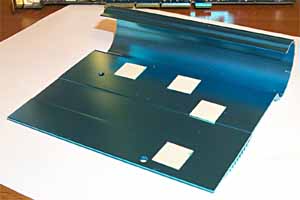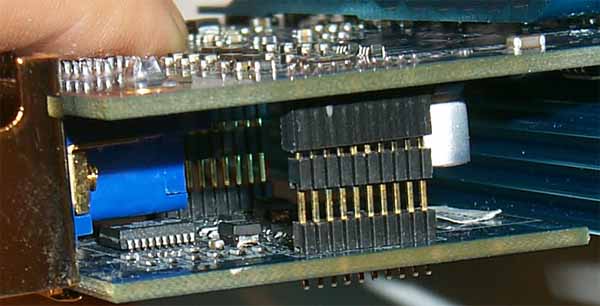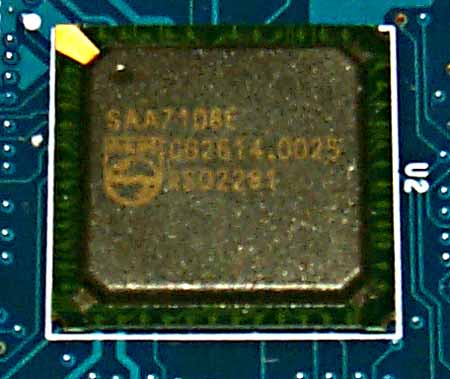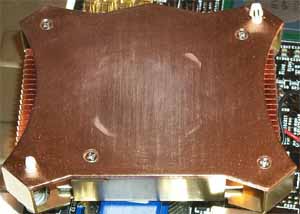 |
||
|
||
| ||
 Contents
Although there are not many girls who can consider themselves experts in video cards, the video card from Sparkle is designed exactly for them! :-) This Taiwanese company whose production facilities are located in China is well known in the world. Unfortunately, its cards are often named in price-lists as simply "NVIDIA GeForce4 Ti 4600 VIVO" and sell at very low prices. We understand that it's Sparkle, because it produces all such cards with VIVO and noname companies hardly deal with such cards. But why don't they indicate the company's name? Its name is anyway written on the boxes. Besides, Sparkle produces cards for eVGA which is so popular in the USA. The second product is from so famous ASUSTeK. The video card department has changed a lot regarding variety of lines and the price policy. Once overpriced cards now have their prices much down, the company develop new families based on the same chipset within which cards differ in features, accessories etc. Just take a look at the GeForce4 Ti 4200 family which includes 4 or 5 cards including solutions based on the Ti 4600" PCB - V8420S. Contrary to a similar card from Albatron, the V8420S has frequencies of both memory and chip increased, and this card can easily compete against the Albatron's product. However, we wrote about all that stuff in the reviews listed below.
Theoretical and analytical videocard reviews, containing functional analysis
of NVIDIA GeForce4 Ti GPU:
As the name of the Sparkle Platinum GeForce4 Ti 4600 card indicates, it uses the Ti 4600 but with some improvements implied by the word Platinum. Today we will also study the ASUS's solution which is based on the GeForce4 Ti 4200 with AGP8x (NV28) - V9280S from the SuperFast series. But this is also more than just Ti 4200-8x: this is a card on the same Ti4600's PCB. Cards
Now the most tasty thing - an unusual design of the Sparkle's card, and first of all, the design of its cooling system.   The cooler consists of two heatsinks (like on a similar card from Leadtek) meant for the chip and memory. Such approach is not ideal as heavy heatsinks can move in course of operation breaking the contact between the heatsinks and the chips, and the chip can be like in a hothouse. It causes overheating and failures. Although these heatsinks have heat-conducting pads which make the contact with the chips tighter, I still think that separate heatsinks for a core and memory would be a more reliable and effective solution. One of the advantages is the shape of the turn of the big heatsink over the card in the form of a cylinder with a large hole. If they mounted an additional fan blowing air along the card the air would pass through this hole cooling down the heatsink. The whole cooler will be shown below. The card supports hardware monitoring of the card's state which is based on the daughter card on the left on top. Don't worry: this is not shifting of the d-Sub onto a daughter card but mounting of respective elements on a small plate:     The large heatsink has a copper base which is well polished. The other heatsink made in the form of a plate which is mounted on the back of the card for cooling memory, but it's not that good as it should be:  On the front side there are separate heatsinks for the memory chips (one for a pair). The cooler hides the GPU itself:  |
|||||||||||||||||||||
Both cards come with VIVO, they have d-Sub and DVI connectors.
And now we are going to look into the boxes:

Both cards ship in the retail packages.
That's all about the peculiarities of the cards.
| Sparkle Platinum GeForce4 Ti 4600 | 300/680 -> 325/720 MHz, quite good results for the memory and average ones for the core. |
| ASUS V9280S (Super Fast Series) 128MB | 275/600 -> 326/710 MHz, excellent for the Ti 4200, - it reaches the top scores of many Ti 4600 based cards! |
But:

Testbeds:
The test system was coupled with
In the tests we used NVIDIA's drivers of v40.72. VSync was off, S3TC was off in the applications.
Before we start examining 2D quality I should say that there is no a complete technique of objective estimation of this parameter because:
As for the tested samples, together with the ViewSonic P817 monitor and BNC Bargo cable the cards showed excellent quality at the following resolutions and frequencies:
| Sparkle Platinum GeForce4 Ti 4600 | 1600x1200x85Hz, 1280x1024x120Hz, 1024x768x160Hz |
| ASUS V9280S (Super Fast Series) 128MB | 1600x1200x100Hz, 1280x1024x120Hz, 1024x768x160Hz |
We won't publish the test results of the cards in question as similar solutions were tested before a lot. The test scores are included into our 3Digest the diagrams from which are given below. We have test results of the Ti 4600 based cards working at 300/650 and 310/680 MHz that is why it won't be a problem to predict the scores of the Sparkle's card at 300/680 MHz, as well as of the ASUSTeK's model.
For the performance estimation we used:
The overclocked cards are marked with red color, the sign o/c (overclocked) is followed by the frequencies reached.
Both cards showed a stable and reliable operation in 3D, no hang-ups were noticed.
In our 3Digest you can find complete comparison characteristics of video cards of this and other classes.
Highs:
Lows:
Write a comment below. No registration needed!
|
Article navigation: |
| blog comments powered by Disqus |
| Most Popular Reviews | More RSS |
 |
Comparing old, cheap solutions from AMD with new, budget offerings from Intel.
February 1, 2013 · Processor Roundups |
 |
Inno3D GeForce GTX 670 iChill, Inno3D GeForce GTX 660 Ti Graphics Cards A couple of mid-range adapters with original cooling systems.
January 30, 2013 · Video cards: NVIDIA GPUs |
 |
Creative Sound Blaster X-Fi Surround 5.1 An external X-Fi solution in tests.
September 9, 2008 · Sound Cards |
 |
The first worthwhile Piledriver CPU.
September 11, 2012 · Processors: AMD |
 |
Consumed Power, Energy Consumption: Ivy Bridge vs. Sandy Bridge Trying out the new method.
September 18, 2012 · Processors: Intel |
| Latest Reviews | More RSS |
 |
Retested all graphics cards with the new drivers.
Oct 18, 2013 · 3Digests
|
 |
Added new benchmarks: BioShock Infinite and Metro: Last Light.
Sep 06, 2013 · 3Digests
|
 |
Added the test results of NVIDIA GeForce GTX 760 and AMD Radeon HD 7730.
Aug 05, 2013 · 3Digests
|
 |
Gainward GeForce GTX 650 Ti BOOST 2GB Golden Sample Graphics Card An excellent hybrid of GeForce GTX 650 Ti and GeForce GTX 660.
Jun 24, 2013 · Video cards: NVIDIA GPUs
|
 |
Added the test results of NVIDIA GeForce GTX 770/780.
Jun 03, 2013 · 3Digests
|
| Latest News | More RSS |
Platform · Video · Multimedia · Mobile · Other || About us & Privacy policy · Twitter · Facebook
Copyright © Byrds Research & Publishing, Ltd., 1997–2011. All rights reserved.